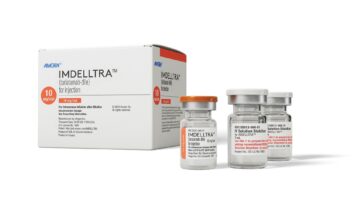While there may be an explosion of wearable health devices for consumers that bring them a multitude of new data streams, incorporating those devices and that data into a major health system’s EHR remains a daunting, slow-moving task.
That’s according to Martin Entwistle, director of Sutter Health‘s Innovation Center at the Palo Alto Medical Center, speaking on a panel with Validic CTO Drew Schiller at HealthBeat in San Francisco.
Among the biggest challenges, according to Entwistle, is capturing reliable data from wearables such as FitBit and matching it with clinical data.

A Deep-dive Into Specialty Pharma
A specialty drug is a class of prescription medications used to treat complex, chronic or rare medical conditions. Although this classification was originally intended to define the treatment of rare, also termed “orphan” diseases, affecting fewer than 200,000 people in the US, more recently, specialty drugs have emerged as the cornerstone of treatment for chronic and complex diseases such as cancer, autoimmune conditions, diabetes, hepatitis C, and HIV/AIDS.
“Much of what we have is structured data going into the medical record,” he said. “Now we have a whole new world of devices that are coming on that aren’t part of the ecosystem, and now we’ve got data all over the place.”
The issue of too much data has been a central theme in the world of digital health, with providers noting the promise of so-called big data is great but currently disjointed and chaotic. Providers in particular have to be much more methodical in their acceptance of certain devices and ensuring it’s accurate data.
Sutter Health so far has limited its integration to about four wearable devices.
“It has helped but some of the challenges are about the disparate nature of the data – in our work integrating the consumer-driven data, great though it is, we’ve come across issues,” Entwistle said.

BioLabs Pegasus Park Cultivates Life Science Ecosystem
Gabby Everett, the site director for BioLabs Pegasus Park, offered a tour of the space and shared some examples of why early-stage life science companies should choose North Texas.
Seemingly benign issues can impact a health system’s arraignment of data. In Sutter’s case, it was data that contained a time stamp from a different time zone in China, Entwistle said.
“Different time stamps, data that is incorrect that your write into the EHR and now you can’t remove it, all of that has to be addressed,” he said.
That’s where Validic hopes to come in, aiming to standardize the data from otherwise disparate and emerging sources.
“The goal is to be the digital health connector,” Schiller said, adding the hope is to make the data “easily digestable” for providers with any device.
But it’s been a challenge, he said, with most providers and payers just beginning to even consider utilizing such data.
“This is a fast growth world of messy data,” he said.
In the meantime, provider organizations are likely to move a slower pace than hoped for, but there is hope, Entwistle said.
“This is why we’re moving slowly and cautiously, but we’d like to move faster,” he said.












